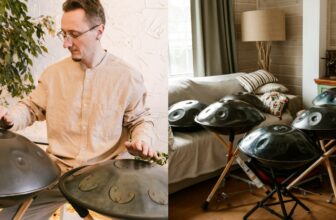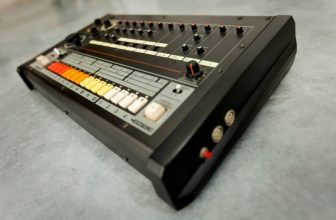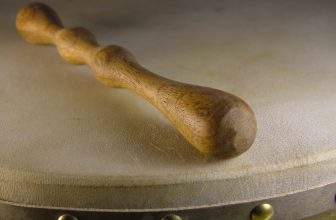How To Play the Bodhran in 6 Steps

In this article, we’re going to give you a step-by-step tutorial on the basics of playing the bodhran. Inside you will find written explanations as well as some tutorial videos to help you master this instrument.
The bodhran is an ancient Celtic drum originating from Ireland. Even though it is not the most well-known instrument, it has its niche and can be used in different music genres.
Contents
- 1. Bodhran Position
- 2. Holding the Stick (Also Known as a Tiper/Cipín/Beater)
- 3. Playing Rhythms (Jigs and Reels)
- 4. Changing the Sound of the Drum
- 5. Rimshots
- 6. Using Your Hands
- Is It Easy To Learn the Bodhran?
- How Do You Pronounce “Bodhran”?
- What Is a Bodhran Stick Called?
- What Does the Word “Bodhran” Mean?
- Summary
1. Bodhran Position
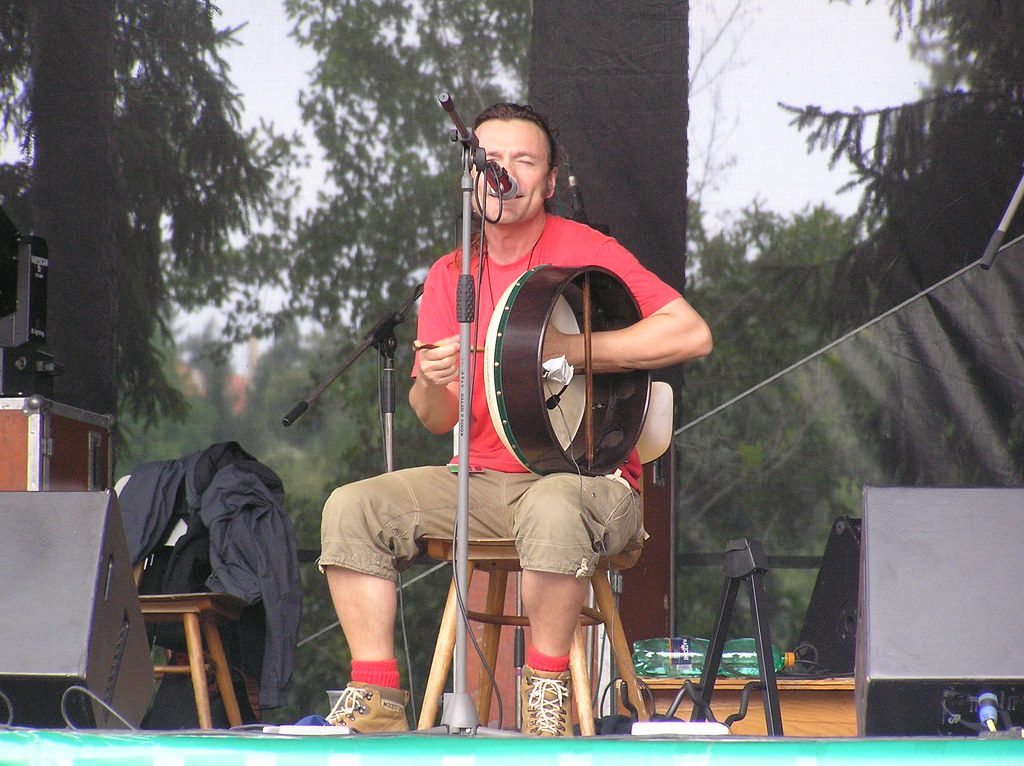
Even though the bodhran looks somewhat similar to a snare drum on the outside, it’s played very differently. The biggest difference is that you need to hold it upright. This means that you’re going to rest the drum sideways on your thigh and knee, holding it with one hand and playing with another.
If you’re right-handed, you’re going to place it on your left knee and hold it with your left hand, playing it with your right (vice versa for the left-handed). When positioning the drum, you want it to go straight up and straight out—no leaning on any axis. Your knee should be leveled and your back upright to give you a balance when playing.
When holding the drum, you’re going to place the lower part of your arm (from elbow to the wrist) around the drum, hugging it essentially, and rest your arm on the wooden frame lightly with as much force as you need to hold it tight.
Depending on how you place the palm of your hand on the skin of the drum, you’re going to get different sounds, but the basic way is to lightly press the top of your fingers and side of your thumb to the upper part of the skin to get the standard sound without any ringing.
2. Holding the Stick (Also Known as a Tiper/Cipín/Beater)
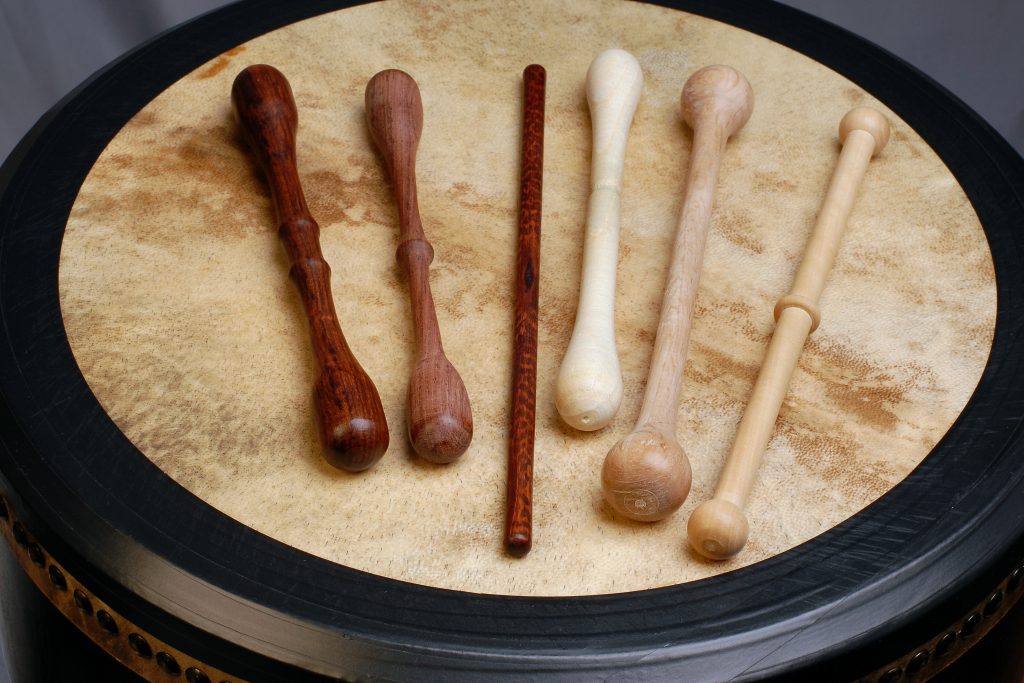
The stick used for this drum is a bit unusual. It’s also called a tiper, cipin, or beater, depending on who you ask. It has two beaters on the end of the stick, and when you hold it, you want to get it around the center or just below the center on any side.
There are often marks on the stick, like little bums, to give you an idea of how far you should go to the side. When you hold the stick, you want to hold it like a pencil in your fingers, and then you can play. When playing, you want it to be at a 45-degree angle position when hitting the drum.
3. Playing Rhythms (Jigs and Reels)
When learning about Irish music, you’re going to hear a lot about jigs and reels. The jig is a traditional Irish type of dance, with a 6/8 rhythm—very upbeat. Reels are the four main beats to which traditional dances are played to. They are similar in that both are danced to, but they have different rhythms and are distinct from one another.
Playing reels is the basis of any bodhran playing. There are four basic ones, but you can also spread out and search for more once you get the hold of the basic ones—on the beat, off the beat, combination, and syncopated version. The whole point is to play that standard beat where you hit the drum up and down with your stick and use different means to accentuate some beats to create new music.
As for the jigs, when you start practicing, you’re going to notice that it’s the waltz rhythm you’re playing. For the basic jig, you’ll be playing it with one downward stroke, one upward stroke, and finish with one semi-downward stroke. This will give you that basic rhythm of three beats, which then evolves as they are combined in different ways, as you can see in this video.
4. Changing the Sound of the Drum
As we’ve mentioned before, the way you position your hand on the back of the drum can really change the sound of the drum (as with any drums, really). You should practice and see what sounds you get from different hand placements.
Changing the position of your hand is going to give you a different sound, depending on how much ring or bass you want to give to your beat.
5. Rimshots
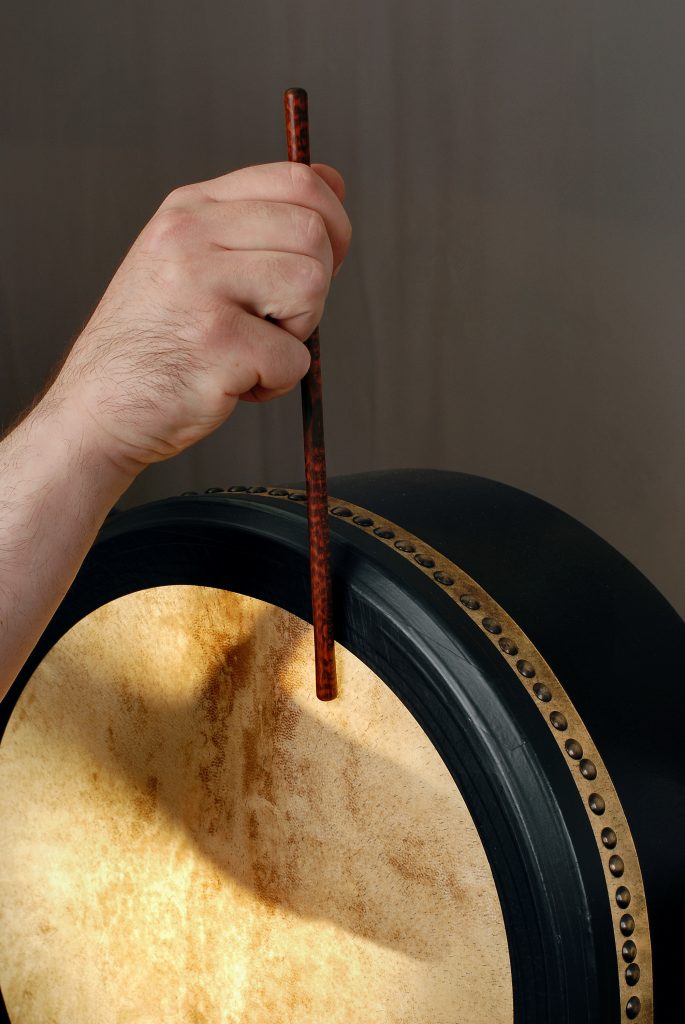
Rimshots are used the same way as with any drums—to accentuate the playing. Yet, they are fairly often used with the bodhran as there is not much sound change you can get from playing just the drum.
To get them right, you should aim to hit the rim of the drum with your stick to get a clean clicking sound. Rimshots are used together with standard rhythms and give you a fresh new sound from the same rhythm you already know to play.
6. Using Your Hands
As with any drum, you can always play it with your hands and not use a stick. In this case, you’re going to use the same hand motion as with your stick—playing up and down, hand loose from the wrist (same motion as playing the guitar).
You hit the skin of the drum with the knuckles on the outside of your fingers, the same way you would with the stick. Start practicing with one finger and add more and more fingers to get more sounds in your playing. The sound is a bit more muffled but still has great vibes.
Is It Easy To Learn the Bodhran?
Playing the bodhran in a basic manner is quite easy. But, as always, there is more to that than it meets the eye if you want to play with skil. The main thing, as with every instrument, is to keep practicing regularly.
This practice will help you get to know yourself and the instrument and have some muscle memory when taking the bodhran in your hands.
More advanced rhythms (jigs and reels, if you will) take some practice and understanding of how the drum works.
How Do You Pronounce “Bodhran”?
“Bodhran” is an old Gaelic name, so it’s not really pronounced the same way it is written. The closest you can get to the original is to pronounce it like bow-rawn (baʊrɑːn).
What Is a Bodhran Stick Called?
As we’ve mentioned before, the stick for the bodhran drum is also called a tiper/cipín/beater. You can also use other sticks if you wish to experiment or just play it with your hand.
What Does the Word “Bodhran” Mean?
Bodhran is actually just an old Irish word for a “drum” or “tambourine”. Now it has become the name of this specific instrument and not the whole range of instruments.
Summary
We hope this article helped you get a closer look at the bodhran and the basics of how to play it.
The bodhran is also fairly easy to learn, so you shouldn’t be afraid to take it on. Just remember to practice regularly, and you will be playing it like a maestro in no time!
Image Credits:
Featured Image by: “bodhran” by theilr is licensed under CC BY-SA 2.0
Image under ‘Bodhran Position’ heading by: “Jeremy” by Poitin Jimmie is licensed under CC BY 2.0
Tiper/Cipín/Beater Image by: “File:203-0136 bodhran tipper-beater-cipin-stick hinnerk-ruemenapf-v01-i01-h2000.jpg” by Hinnerk R Hinnerk Rümenapf is licensed under CC BY-SA 3.0
Rimshots Image by: “File:203-0046-bodhran top-end hinnerk-ruemenapf-v01-i01-h3000.jpg” by Hinnerk R Hinnerk Rümenapf is licensed under CC BY-SA 3.0

